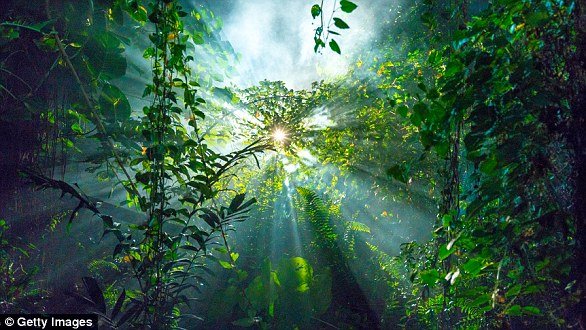Revealed: The pitch BLACK river that’s so dark you can’t even see your hand in front of your face
>
The idea of Dark River may sound like something out of the latest Hollywood adventure movie.
But such a waterway exists in the real world, and it is so dark that you cannot see your hand in front of your face.
The Rocky River, a tributary of the Congo River in the Democratic Republic of the Congo, is one of the darkest bodies of water in the world.
In the first-ever scientific study of the river, researchers from the Swiss Federal Institute of Technology in Zurich found that the Rocky River gets its color from high levels of dissolved organic matter from the surrounding rainforest.
“Rockey is basically a forest tea,” said Dr. Travis Drake, lead author of the study.
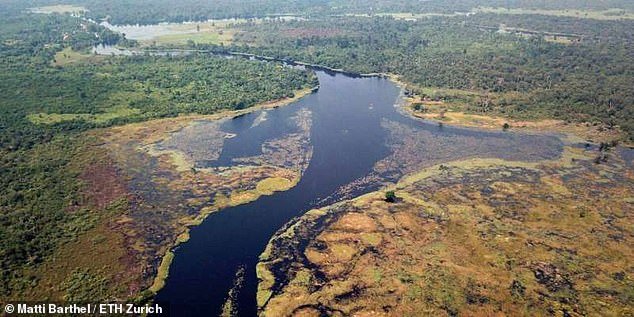
The Rocky River in the Democratic Republic of the Congo is one of the darkest rivers in the world according to scientists
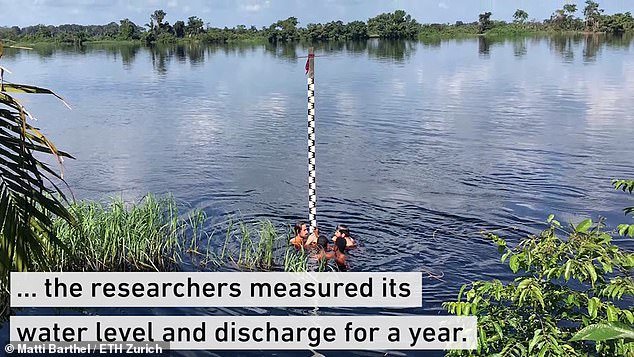
Researchers from ETH Zurich measured water levels in the river for a year to calculate the total volume of water passing through it
Across a drainage basin four times the size of Switzerland, carbon-rich compounds seep from rotting plant material and are washed into the Rocky River by heavy rains and floods.
Speaking to MailOnline, Dr Drake said: DOC (dissolved organic carbon) levels are so high because there is a high density of forest plants in the catchments to infiltrate rainwater.
“The organic compounds leached from these plants absorb light, so the higher the concentration, the darker the water appears. It would be like brewing a very concentrated tea using many tea bags.”
The area around the Rocky River is covered in Congo lowland rainforest, the second largest rainforest on Earth.
To understand how this abundance of plant material affects the color of the Rocky River, as well as the entire Congo River, Dr. Drake and his team set up a measuring station near the city of Mbandaka.
The team measured water discharge every two weeks and daily water levels for a year to determine the volume of water passing through.
Water samples were also collected and sent back to the laboratories at ETH Zurich to determine DOC content.
Working without a permanent power source, limited infrastructure, or even an electric drill, researchers say they often had to improvise to get the data they needed.
However, taking measurements from such a remote location was vital because it allowed the team to study a huge area from a single point.
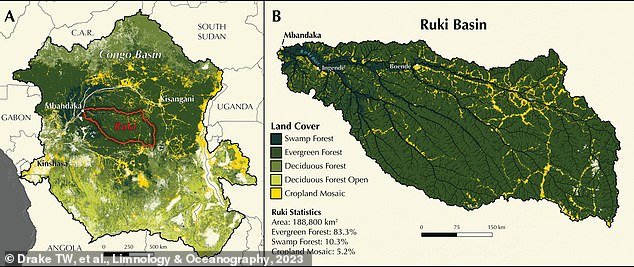
The Rocky Basin is four times the size of Switzerland, although it is only one-twentieth the size of the vast Congo Basin.
Co-author Dr Matti Barthel said: ‘We only need to collect samples from one place to get information about a huge area, like a doctor taking a blood sample to determine a patient’s health status.’
Using these measurements, the team found that the Roque River was 1.5 times darker than the Rio Negra in the Amazon, the largest blackwater river in the world.
Although the Rocky River makes up only one-twentieth of the Congo Basin, one-fifth of the Congo’s total dissolved carbon comes from this single tributary.
Researchers say understanding the flow of carbon through the Rocky River is important for understanding how carbon dioxide and other greenhouse gases are stored in rainforests and river basins.
Dr. Drake explains that the Rocky River, like most rivers in the world, is a source of carbon dioxide emissions into the atmosphere.
When water passes through the soil, it picks up microorganisms that decompose plant matter, releasing carbon dioxide.
Likewise, the carbon dissolved in the river is also eaten up by microorganisms to produce more carbon dioxide.
Dr Drake told MailOnline: ‘Because of these processes, most rivers are ‘supersaturated’ with carbon dioxide compared to the atmosphere, meaning they have a higher concentration.
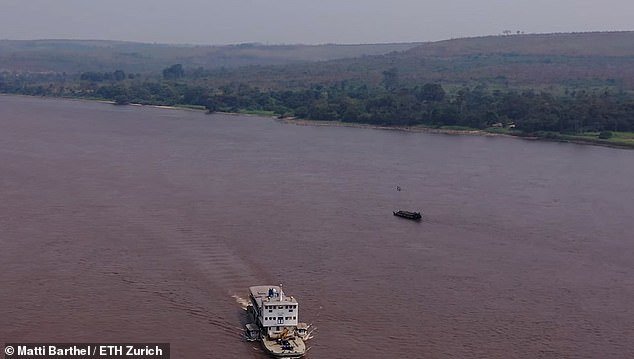
The Congo River, seen here from space, is surrounded by lowland rainforests and peat swamps, making it a valuable storehouse of carbon
“This carbon dioxide then escapes from the surface of the river, especially when the river water encounters turbulence, such as flowing across a fast river. This process is similar to shaking a soda and seeing carbon dioxide bubbles seep from the top.
However, this study found that because the Rocky River is not very turbulent, emission levels are not exceptionally high, despite its extremely high carbon content.
Of greater concern in terms of global warming are the vast peat swamps that lie beneath the Rocky Basin.
Peat is extremely rich, organic soil that forms when the ground becomes saturated with water and runs out of oxygen for use by bacteria that normally decompose plant material.
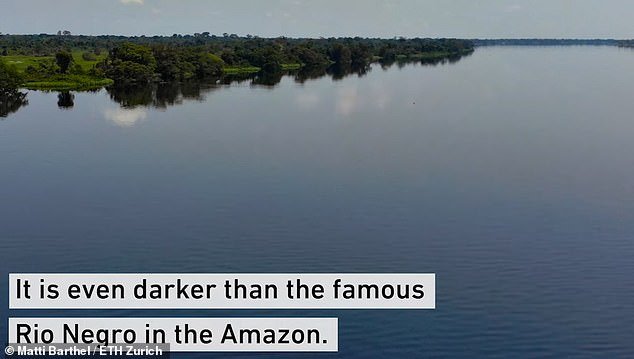
If the river is affected by resource extraction in the area, it could cause the peat bogs to dry up, releasing massive amounts of carbon into the atmosphere
These “anoxic” conditions allow organic matter to accumulate, sequestering carbon absorbed from the atmosphere during the life of plants.
The researchers found that rockies pull very little carbon from the peat bogs they cover, but keep these underwater areas stable.
Scientists estimate that peat swamps in the Congo Basin store about 29 billion tons of carbon.
However, some companies have taken an interest in the natural resources of the Rocky Basin, and changes in land use or deforestation may alter the river and drain the peat bogs.
“It is important that peat bogs remain moist so that they are not exposed to oxygen that allows them to decompose and produce large amounts of carbon dioxide, which may end up in the atmosphere,” Dr. Drake concluded.
(Tags for translation)dailymail

